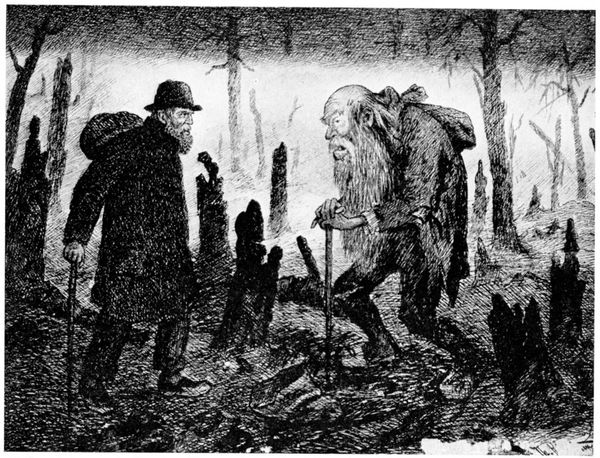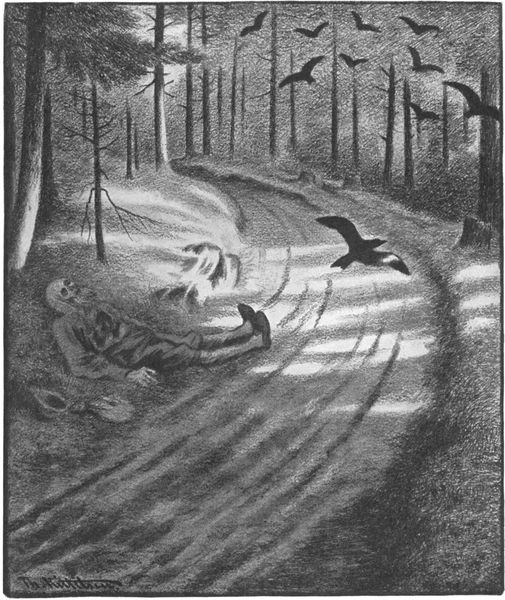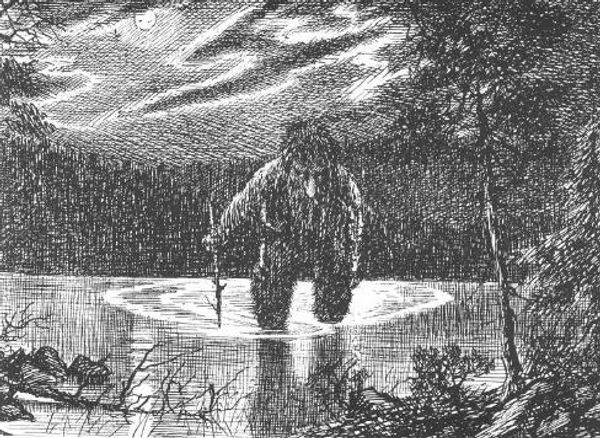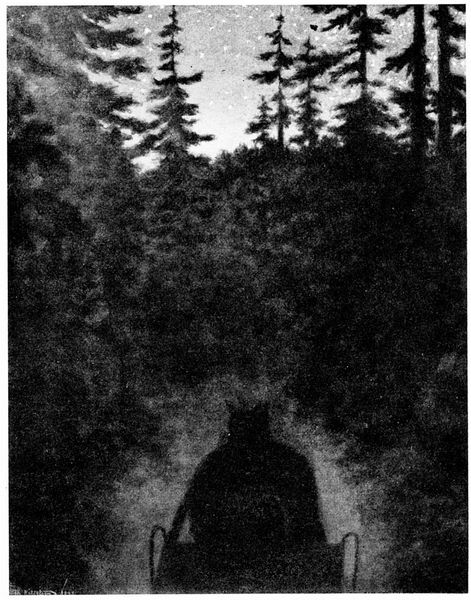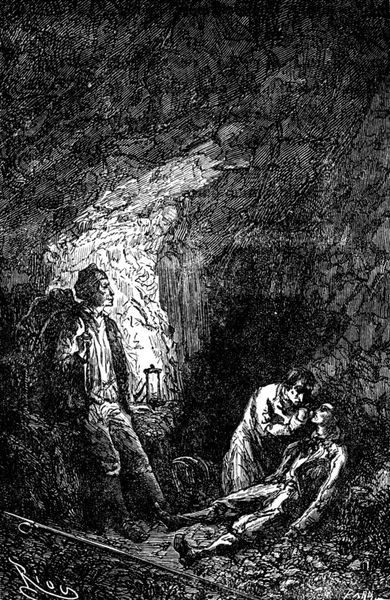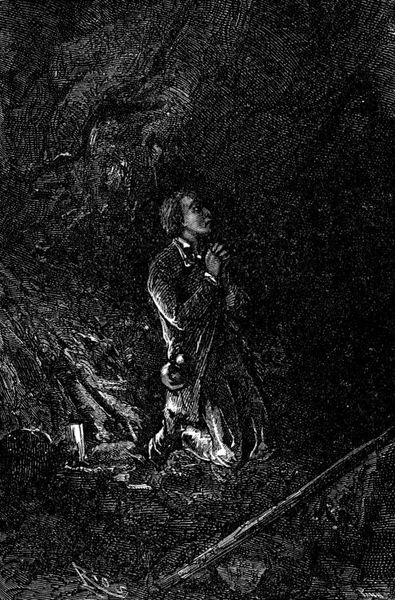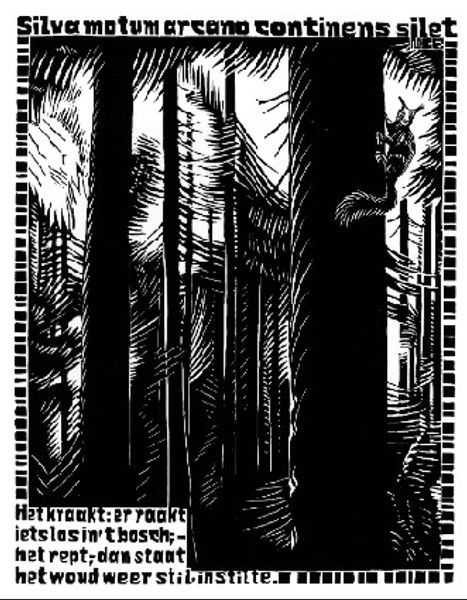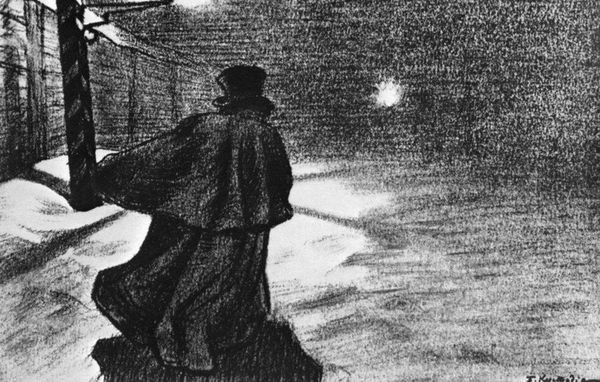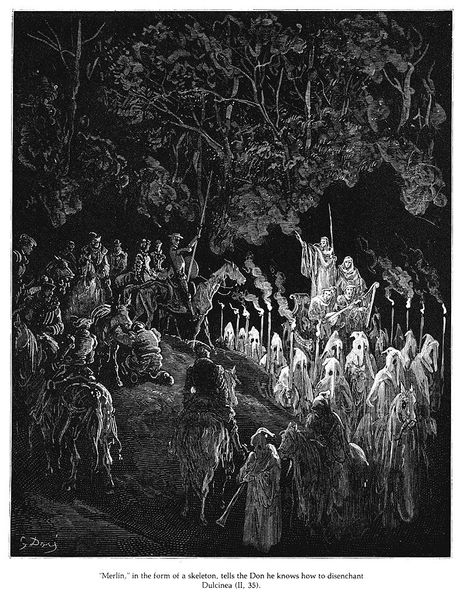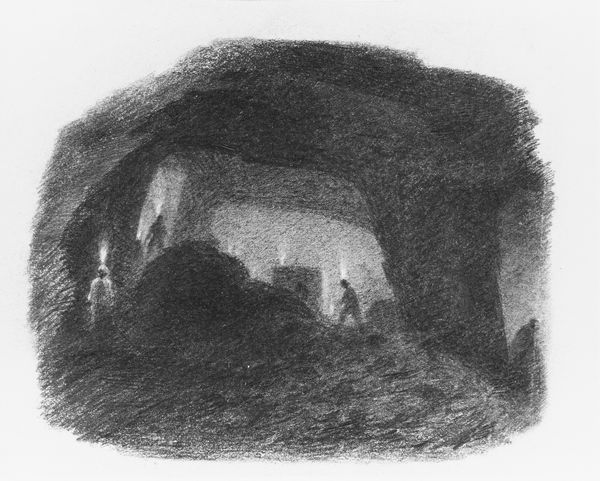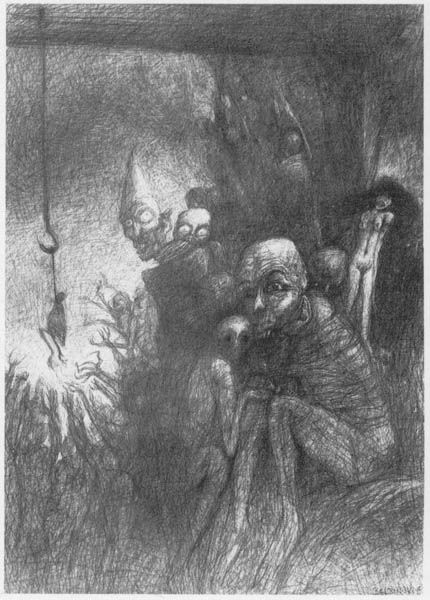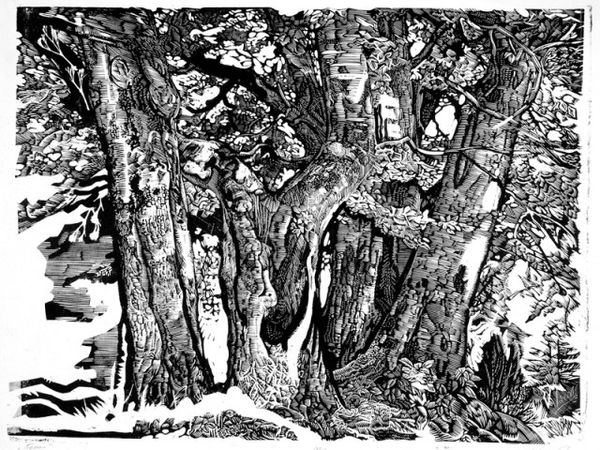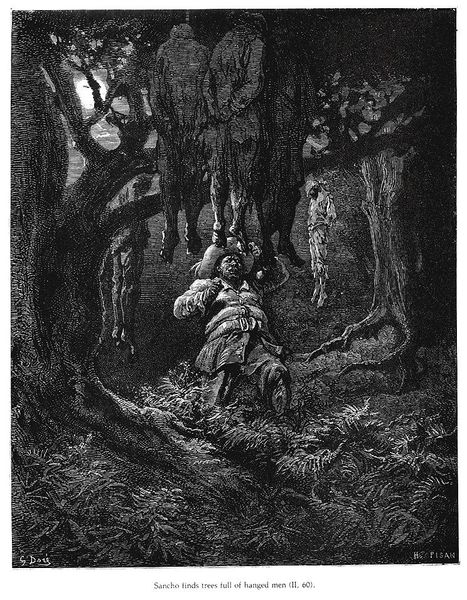
drawing, ink, pencil
#
tree
#
drawing
#
landscape
#
figuration
#
ink
#
forest
#
plant
#
pencil
#
symbolism
#
northern-renaissance
Copyright: Public domain
Curator: Today we are observing "Peer Gynt 07", an ink and pencil drawing completed in 1890 by Theodor Severin Kittelsen. The work forms part of a series inspired by Henrik Ibsen’s play, depicting scenes and characters from the story. Editor: My first thought is that the high-contrast values make this incredibly atmospheric; the overall effect is melancholic, perhaps even sinister. The old man and the bleak forest really speak to themes of isolation. Curator: Precisely. Kittelsen’s interpretation of Ibsen's text is rooted in the socio-political landscape of late 19th-century Norway, as national romanticism sought to define a distinct Norwegian identity through folklore and depictions of nature. These kinds of dark representations resonated at that time, for instance. Editor: But I think this goes deeper. The surrounding decorative border populated with wailing babies is disturbing. They read like visual metaphors for guilt and unfulfilled potential, haunting the character within the scene. Is this an attempt to visualize societal and psychological turmoil using an almost fairy-tale aesthetic? Curator: In a way, yes. Kittelsen contributed significantly to Norway's visual identity and how its perceived through an almost Symbolist, folklore-inspired language. Consider the formal qualities: stark, barren trees, a subdued palette achieved through very deliberate ink and pencil work that, culturally speaking, speak to the idea of national identity forged by natural forces. Editor: It seems also as if the artist had no intentions of resolving the dark mood or psychological landscape, leaving a portrait filled with unresolved angst. I am stuck at trying to place the figure within the artwork, and relate that with broader ideas of personhood as they evolve within communities that are also under transformation. Curator: Well, his approach does reveal tensions within the construction of national identity – the romanticized vision clashing with the stark reality of individual experience and alienation. I find compelling the public role that these imageries have on society as a whole. Editor: This kind of raw expression contributes towards the questioning and re-evaluation of collective identities, moving away from monolithic ideas and allowing for more inclusive and diverse narratives to come forward. I guess the magic relies precisely on such tensions, and on its relevance within contemporaneity.
Comments
No comments
Be the first to comment and join the conversation on the ultimate creative platform.
